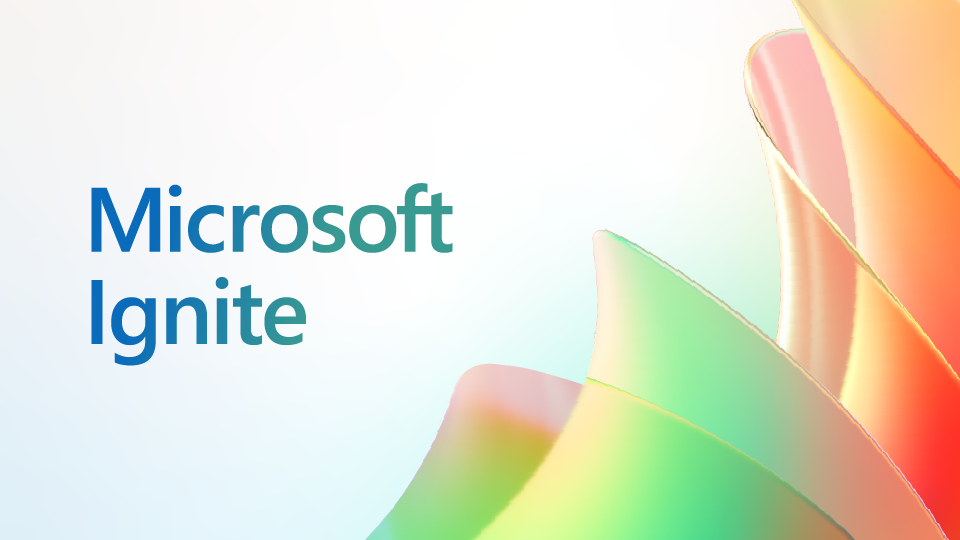Microsoft Ignite Announcements for Developers
 Jason Berberich
Jason Berberich
Microsoft Ignite was held last week, and with it came dozens of announcements across all of Microsoft's products and services.
Here are the ones I think are most important for developers working in Azure.
.NET
Announcing .NET 8 — Faster performance, improvements for Blazor and .NET Maui, enhancements for AI development, and much more.
.NET Aspire — A new development stack for building cloud-native applications with .NET, including components for telemetry, resilience, configuration, and health checks.
Azure Migrate application and code assessment is now available for .NET and Java — A free tool that helps users analyze their .NET and Java applications and provide guidance on how to migrate them to Azure.
Azure AI
Microsoft Ignite 2023: AI transformation and the technology driving change
Model-as-a-Service — This feature allows developers to easily integrate the latest AI models, such as Llama 2 from Meta and upcoming premium models from Mistral, and Jais from G42, as API endpoints to their applications.
Azure AI Studio — Build your own copilots, train your own, or ground other foundational and open models with data that you bring, all in one place.
Azure AI Vision — Integrate advanced image features into your applications.
Vector Search is generally available — A comprehensive vector database solution to store, index, query, filter, and retrieve your AI data for use with large language models.
Azure Container Apps
Azure Container Apps (microsoft.com)
GPU-enabled workload profiles — Create Azure Container Apps environments with NC A100 v4 GPU-enabled compute for AI applications, machine learning, video processing, and more.
Vector database add-ons — Make your own data available as LLM embeddings with popular vector databases like Qdrant, Milvus, and Weaviate.
Resiliency policies — Use Dapr resiliency policies to proactively prevent, detect, and recover from service request failures.
Integrated cloud build — Use CNCF Buildpack capabilities to build and run applications in Container Apps without the need for a container.
Azure Container Apps Landing zone accelerator is generally available — Build a production-grade Container Apps landing zone using the latest architectural guidance and templates provided by the experts at Microsoft.
Azure Kubernetes Service
Kubernetes AI toolchain operator — Run specialized machine learning workloads like large language models on AKS more cost-effectively and with less manual configuration.
Azure Kubernetes Fleet Manager is generally available — Allows admins to orchestrate updates at scale across multiple AKS clusters by using update runs, stages, and groups.
Azure Container Storage is now available with Azure Linux container host — You can now easily use Azure Container Storage on clusters running Azure Linux.
Confidential containers on Azure Kubernetes Service is in public preview — Run individual pods in their own trusted execution environment using the Kata open-source secure container runtime.
Cost analysis add-on for AKS is in public preview — Get granular cost allocation of AKS clusters to understand how much individual applications cost and which can be optimized.
Image integrity support in AKS is in public preview — Allows you to add an Azure Policy to verify that only signed container images are deployed to your AKS clusters.
Azure Functions
Azure Functions - Ignite 2023 update:
Azure Functions Flex Consumption — Introduces private networking, instance size selection, and fast and large-scale out features on a serverless model.
.NET 8 support is generally available — Day-one support for the latest version of .NET released at .NET Conf 2023.
Isolated worker model improvements — Better performance and new support for a range of features make the isolated worker model the best way to create Azure Functions using .NET.
Azure Functions v4 programming model for Node.js — More flexibility and a better developer experience when creating Functions in JavaScript.
Higher defaults for Azure Functions Event Hubs max batch size — Improves performance and lower costs when working with events from Azure Event Hub.
Dapr extension for Azure Functions — Easily pair the Azure Functions programming model with the cloud-native features provided by Dapr.
Azure App Service
Azure App Service at Ignite 2023:
Conversational Diagnostics on Windows App Service — Diagnose and troubleshoot using integration with Microsoft Copilot for Azure.
Sidecar Extensibility on Linux App Service — Easily integrate with Dapr, Application Performance Monitoring, and other solutions alongside your web apps.
WebJobs for Linux App Service and Windows Containers — Run continuous or periodic scripts and background tasks alongside your web applications.
Support for .NET 8 — Run applications created in the most recent Long Term Support version of .NET announced last week.
gRPC support on Linux App Service is generally available — Streamline messages between your client and server over HTTP/2.
Multi-plan Subnet join — Reduce the number of subnets you need for multiple App Service deployments by using a single subnet for multiple App Service plans.
Azure Logic Apps
Introducing Azure Integration Environment — A new unified experience that helps customers manage and monitor their integration resources effectively. It allows customers to organize their resources logically, providing business context and reducing overall complexity.
Azure Logic Apps workflow assistant in public preview — Workflow assistant is a chat interface that uses Azure OpenAI to answer questions about Azure Logic Apps capabilities and workflows from within the designer.
General Availability of Azure Logic Apps' New Data Mapper for Visual Studio Code — A visual data transformation tool that can help create and execute maps between XML or JSON formats.
Announcing general availability of .NET Framework Custom Code for Azure Logic Apps — Allows organizations to use their investment in BizTalk to extend their low-code Logic Apps with custom C# code for complex integration problems.
Azure Deployment Environments
Azure Deployment Environments optimizes developer experience and adds new enterprise capabilities:
azd integration: Developers can use the Azure Developer CLI (azd) to provision and deploy their apps using simple commands like
azd up,azd provision, andazd deploy.Bicep support: Platform engineers can use Bicep, a DSL for Azure resource deployment, to create more efficient and consistent infrastructure as code templates for Deployment Environments.
Cost management features: Developers and platform engineers can use scheduled auto-deletion and Azure Advisor recommendations to optimize the performance and cost of their resources created by Deployment Environments.
Microsoft Dev Box
New capabilities help simplify and streamline the experience with Microsoft Dev Box:
Configuration-as-code for personalized Dev Box customizations
A new Visual Studio image built for Dev Box that includes Docker Desktop
A simplified networking option for zero-trust scenarios
A new quick-create template that creates everything you need to get started with Dev Box.
Cosmos DB
Azure AI Advantage for Azure Cosmos DB — Customers who are using Azure AI services or GitHub Copilot products can get the first 40,000 RU/s free in a new Azure Cosmos DB account for 90 days.
Azure Cosmos DB for MongoDB vCore is now generally available — Dedicated resources for high-capacity scaling with predictable pricing.
Vector search in Azure Cosmos DB for MongoDB vCore is generally available — Native vector search functionality for use with AI applications.
Azure Open AI “Use your data” integration with Azure Cosmos DB for MongoDB vCore is in public preview — Easily use Retrieval Augmented Generation (RAG) with Azure OpenAI models on your own data.
Priority-based execution in Azure Cosmos DB is in public preview — Prioritize critical requests to improve the customer experience and avoid unnecessary costs.
Microsoft Copilot for Azure capability is now available in Azure Cosmos DB in public preview — Ask questions in English to generate NoSQL queries to return answers from your Cosmos DB data.
Azure Event Grid
Fully managed MQTT broker, flexible consumption patterns and more new features in Azure Event Grid
Azure Event Grid has introduced new features to support real-time, event-driven architectures for IoT devices and applications. Key updates include:
MQTT Broker: Now generally available, this feature enables bi-directional communication between MQTT clients over custom hierarchical topics, supporting one-to-one, one-to-many, and many-to-one messaging using MQTT v5 and MQTT v3.1.1 protocols.
Increased Scale: The scale allowed in a single Event Grid namespace has been doubled, now enabling up to 40 throughput units to support more data-intensive scenarios.
New Delivery Methods: General availability of the MQTT broker capability and pull delivery and the public preview of push delivery in the Event Grid Namespace.
New System Topic and Event Handler: These are now available in public preview in the Event Grid basic tier.
Azure Communication Services
Creating value with intelligent application solutions for B2C communications:
AI Speech capabilities: Add speech recognition and synthesis to call automation workflows, enabling more natural and personalized voice interactions with customers.
Job Router: Simplify the routing of inbound customer communications and direct them to the most suitable point of contact, such as a live agent or an automated service.
AI-assisted voice, video and chat: Use Azure Communication Services and Azure AI Services together to create conversational AI experiences for customers, such as bots, voice agents, and form fillers.
Azure API Management
Azure API Management Credential Manager — formerly known as Authorizations, Credential Manager provides a centralized repository for managing, storing, and controlling access to API credentials and access tokens used with API Management.
Subscribe to my newsletter
Read articles from Jason Berberich directly inside your inbox. Subscribe to the newsletter, and don't miss out.
Written by

Jason Berberich
Jason Berberich
Data, Apps & AI Specialist @ Microsoft. I help customers build apps with AI and modernize their data & analytics workloads.